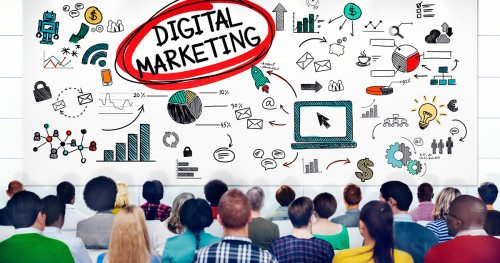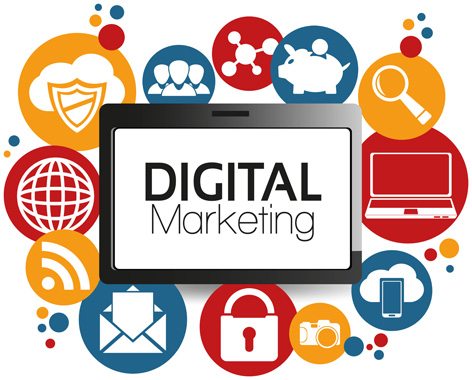
 The world of digital marketing is intricate, and it’s not always easy to keep up with the jargon if you’re not in the industry. If you’re feeling overwhelmed by modern web marketing terms, don’t worry! We’re here to help.
The world of digital marketing is intricate, and it’s not always easy to keep up with the jargon if you’re not in the industry. If you’re feeling overwhelmed by modern web marketing terms, don’t worry! We’re here to help.
Here are some basic digital marketing terms you should know when looking to boost your brand’s online presence.
Adwords: A Google service that allows you to advertise on the search engine using the PPC method.
API (Application Program Interface): A standardized set of requests that one software program allows another program to use.
Backlink: A link on one website that leads to a page on another website.
Buyer Persona: Defining a target customer’s demographics and behaviors based on market research. Buyer personas are essentially fictional characters that represent your customer.
Buyer’s Journey: The stages a customer goes through leading up to a purchase including:
– Awareness: The realization that a problem occurs that needs a solution.
– Consideration: Considering and researching the various solutions to your problem.
– Decision: Choosing the right solution and making a purchase.
Content Management System (CMS): A software application that allows you to edit and organize all of the content, including pages, on your website.
CSS (Cascading Style Sheets): A coding language that is often used to manage the visual aspect of web pages.
CTA (Call to Action): A clickable phrase on a web page that encourages readers to take a specific action, such as downloading content or contacting the company.
CPC (Cost Per Click): The cost each time someone clicks on an online advertisement.
CRM (Customer Relationship Management): Managing and analyzing data about leads and customers throughout their buyer’s journey.
Google Analytics: Free software that allows you to monitor your website’s performance and analyze your website’s visitors.
HTML (Hyper Text Markup Language): The standard coding language used to create web pages.
Inbound Marketing: Bringing customers to your business by providing useful, interesting content that your ideal customer willingly consumes. This is an opposing view to traditional marketing, where businesses actively promote themselves.
Interruptive Marketing: Interrupting an activity with an advertisement. For example, a television commercial or magazine advertisement. Most often, interruptive marketing is promotional and not informational.
Javascript: A coding language that allows you to design or change web pages and other interactive features without necessarily altering an entire page.
KPI (Key Performance Indicator): A measurement that determines if a specific marketing goal is met.
Landing Page: The web page a user ends up on after clicking on an advertisement or CTA.
Lead: Someone who has interacted with your brand and could become a customer.
Marketing Automation: Any software application that automates repetitive marketing tasks, including email and social media. Automating routine marketing tasks helps save time and money.
Meta Description: A short summary of a web page that search engines use to determine what topics are covered in the content in order to optimize search results.
Organic Search Results: Listings that are based purely off of SEO, and have no affiliation with paid advertisements.
Pinned Posts: Social media updates that are pinned remain on the top of a page’s feed, regardless of when they were posted.
PHP (Hypertext Preprocessor): A programming language used in web development. PHP can be used on most web servers.
PPC (Pay per click): A form of online advertising where you pay only when someone clicks on your ad.
Reach: The amount of people who viewed your content, regardless of whether or not they interacted with it.
Responsive Website: A website designed for optimal viewing on multiple devices, such as mobile phones, tablets, and desktops.
Return on Marketing Investment (ROMI): (Value & Revenue Attributable to Marketing * Gross Profit – Marketing Spend) / Marketing Spend
Retweet: Posting someone else’s tweet on your own Twitter page.
Sales Funnel: The process of leads turning into buyers.
– Prospects/Leads: The top of the funnel. These consumers are in the awareness stage.
– Opportunities/Inquiries: Consumers that are in the consideration stage.
– Quotes/Proposals: Consumers are almost ready to buy, but still weighing options.
Sales: The bottom of the funnel. Consumers have made a purchase.
Sitemap: An online file that lists all of the URLs of a website so that webmasters can keep track of changes and search engines can find and process all web pages on a site.
SEM (Search Engine Marketing): Using SEO in order to gain leads by ranking well on search engines.
SEO (Search Engine Optimization): Modifying a website in order for it to rank better in search engines.
SMM (Social Media Marketing): Using social networking sites as a marketing tool predominantly to increase reach and interact with consumers.
UTM (Urchin Tracking Module): Attaching code to a URL in order to track clicks and information about visitors using Google Analytics.
Viral: When a piece of content is shared by thousands of internet users and becomes widely seen.
Webmaster Tools (Google Search Console): A free Google service that allows webmasters to upload a sitemap in order to optimize a website’s search engine visibility.
Any digital marketing terms you don’t see above that you think should be included in this list? Mention them in the comments!
